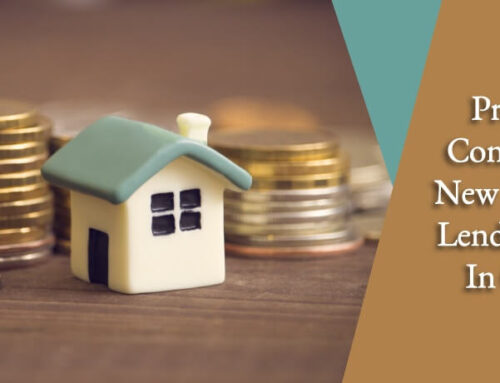Introduction:
Getting into a home doesn’t just happen overnight: It takes research, discipline and a clear plan. Planning for a mortgage is an essential part of the plan. Getting approved for a mortgage may feel like biting off more than you can chew but it is fundamentally a process that may be broken down into smaller, more palatable pieces.
Pre-qualification:
Many people start the Home Buying Process by looking at houses they like. Although it is important to find something desirable, they are missing a quintessential step: Getting Prequalified for a mortgage! What is a Pre-qualification you ask? A Pre-qualification will identify the amount of mortgage that you will qualify for based on your unique set of criteria. The pre-qualification coupled with your down payment will define the budget that you may confidently shop. In many cases, a Real Estate Agent will ask you if you “have you been prequalified?” before providing anything further. As with any process, the Pre-qualification process involves your credit, income and down payment.
Credit:
Now everyone knows they have a credit score, but what is credit, and how does the lender look at it? The credit score will be used in your pre-qualification as well as the actual application. It is based on a set of algorithms produced by reported information from creditors. The credit score seeks to measure all of the data reported to your credit bureau, in a single number. However, within the credit bureau lies a lot of information on what credit facilities you have and how you use them. Your credit bureau will also show how long you have had credit and if there are any recent inquiries. We are all human and invariably sometimes individuals may have anything from a late payment to a bankruptcy. It is not an end to the mortgage applications if these exist. In fact, the lenders look at how you manage your credit, even your bad credit.
Income:
Income is an important part of the mortgage pre-qualification and application since it is the most common source used to service the mortgage payment over time. Therefore, when you income-qualify for a mortgage, the level and stability are scrutinized. Your income level will determine what mortgage payment you will be able to afford. Factors that will decrease how much you can afford in mortgage payment are things such as your debt payments, alimony or child support payments, property taxes or strata fees. In contrast, factors that will increase what you will qualify for are rental income (say from a rental property you own), receipt of Child Benefit, disability income, receipt of alimony or child support etc. The stability of your income is also an important factor. The more stable that your income is, the more likely it will be able to maintain the status quo for the course of your mortgage term. Factors that are considered are your current job role, time with current employer, tenure in the industry, and even the sustainability of the industry to be able to provide you with the same level of pay ongoingly. Additional factors are self-employed versus employed by a company. All of these factors, taken together, give the lender a sense of the sustainability of your income over time to service the mortgage.
Down Payment:
Once you are pre-qualified, you may go and start searching for homes. Be prepared to provide proof of the down payment when you find your ideal home. With every home purchase, you currently need to have a down payment. Purchases with 0% down have existed but are currently not available. The amount and source of down payment dictates the constraints of your mortgage application. The amount of down payment vs property price will show the lenders how much “skin” you have in the game. The more down payment you commit, the more incentive you have to keep your mortgage in good standing and the lower the risk is for the lender. There are also a different set of rules that will apply to different levels of down payment in Canada. With less than 20% down, default insurance paid by the borrower is required and only provided by three insurers (Canada Guarantee, CMHC and Sagen (formerly Genworth (formerly GE))). These insurers provide protection to the lender in the event the borrower defaults on the mortgage. The borrower may choose to include the premium in their mortgage. With a down payment of 20% or more, the borrower is typically not responsible for paying for an insurance premium. Where an insurer is involved, not only will the mortgage application be adjudicated by the lender, it will also be subject to adjudication by the insurer based on their policies. In addition to the amount of down payment, the source of the down payment is also a consideration by lenders. For first time home buyers (or requalifying buyers), using your RRSPs under the HBP to boost your down payment is a great strategy but for those that do not qualify for the HBP will find that RRSPs have taxes withheld if they are redeemed, decreasing the amount available for down payment. Another consideration about where a down payment is coming from is whether it was saved over time or gifted. A down payment saved over time displays financial discipline that will strengthen an application. For regulatory purposes, you could also run into hiccups during the process if you deposited a large sum of cash into your account right before you buy your new place if you are not able to provide an acceptable record of where the money came from. Some key notes for down payment:
- The amount of down payment will influence the criteria used to assess your application.
- The percentage of down payment will directly affect your overall cost of borrowing. With less down, you may be subject to additional approval from the insurer.
- The source of your down payment is important.
- Be prepared to provide proof.
A Note on Rates:
Many people focus on rates because that is all they know. They feel that a low rate is equivalent to cost savings, however, it is not. It is also a common sales tactic to generate public interest with a low rate promo and then switch them to another product because they do not qualify for the original one with a low rate. I have even witnessed people getting into a low rate mortgage which costs them thousands more than it would have if they simply got into the right product in the beginning. There are many more important factors other than rates that are often overlooked. At the end of the day, it is important to find a mortgage that is suitable to your needs. One example of a factor that is more important that the rate is the approval. This is, by far, the most important factor when applying for a mortgage. If you are not approved, it does not matter what comes next because you will not get it. It seems like common sense but it is often overlooked. Other factors you will want to consider (but are not limited to) are prepayment terms, management of your mortgage, portability/assumability and special clauses (i.e. bonafide sales, restricted refinances, extended penalties etc.)
Conclusion:
Getting approved for a mortgage may look like a laundry list of items to do with many factors to consider. Having a good understanding of the steps to follow, a plan and the right guidance will help you go through the process more effortlessly and without unwanted surprises. With the many clients I have helped, the ones that have had the smoothest, most enjoyable experience are those that were clear on the steps that need to be taken as part of the master plan to get into their new home.





